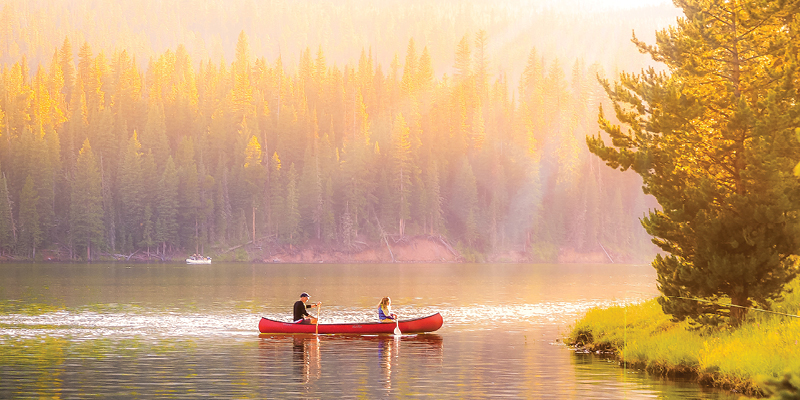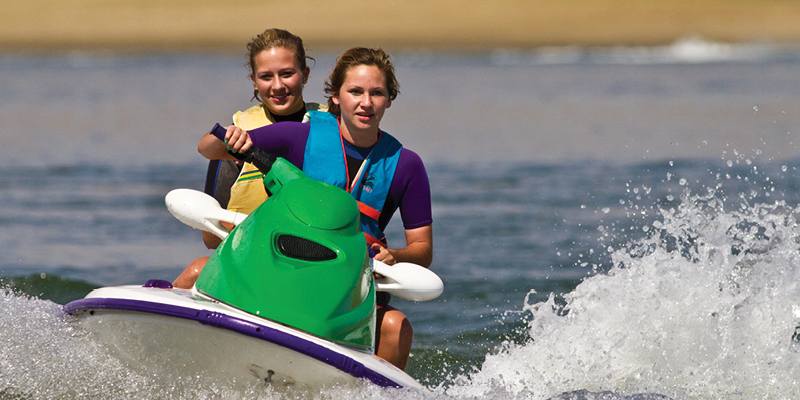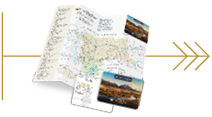Boating in Montana's Yellowstone Country; What You Need to Know
 Yellowstone River, Photo by Andy Austin.
Yellowstone River, Photo by Andy Austin.
Montanan's Yellowstone Country has some fantastic waters. Hebgen Lake near West Yellowstone is so large and grand, with the famous Gallatin, Madison, Jefferson, and Yellowstone Rivers and the incredible bodies of water within Yellowstone National Park. It's a boat lover's dream, from non-motorized carriers like canoes, kayaks, and rafts to motorboats, drift boats, sailboats, and pontoons.
Boating is a lifelong activity and a surefire means of making memories. Understanding Montana's boating requirements ensures our waters stay clean, clear, and healthy for all to enjoy.
Aquatic Invasive Species
AIS and non-native organisms pose a grave threat to Yellowstone National Park and the Greater Yellowstone Ecosystem. Once introduced, AIS can quickly and drastically transform habitats and food chains in our waters, causing permanent declines in fish and food resources for native wildlife. Prevention is critical because eradication is costly and usually impossible. One of the growing threats is Dreissenid Mussels, including Zebra and Quagga Mussels, which are among the world's most harmful invasive species with significant and widespread ecological and economic effects. If these mussels are found in Yellowstone, Park waters may be close to all watercraft to prevent the spread to other waterways. Yellowstone National Park straddles the Continental Divide and headwaters that flow from the Park drain to the Pacific and Atlantic oceans.
Fortunately, there are processes to stop the threat, and if everyone does their part, waterways will remain open for all to enjoy. The first step is to clean, drain, and dry your boat before you bring the watercraft to Montana. Clean all plants, animals, mud, sand, and other debris from your boat, anchor, boots, and equipment. Use high-pressure, hot (120-140F) water if possible. Drain all water from your boat, including the motor, bilge, livewell, and other compartments, before you arrive. Leave drain plugs out during transport. Do not move water or organisms from one water body into another. Dry all compartments and equipment in the sun for five days.
Before launching, an inspection is required. You'll find inspection stations along many Montana roadways, and it is required that you stop. ID and WY inspection stations fulfill the before-launch requirement for Montana, but you still need to stop at ALL open inspection stations in MT. In addition, boats with a ballast or bladder, such as wakeboard or wake-surfing boats, must be decontaminated before launch.
 Hyalite Reservoir, Photo by Angela Yonke.
Hyalite Reservoir, Photo by Angela Yonke.
Boating in Yellowstone National Park
It's crucial to note wakeboard or wake-surfing boats are not allowed on Yellowstone Park waters as inspections cannot always detect aquatic invaders. In addition, felt-soled footwear is banned because it can carry microscopic disease organisms, even after cleaning.
The 2023 fishing season in Yellowstone runs from Saturday, May 27- Tuesday, October 31.
Permits and Inspections
Watercraft and angler float tubes must have a Yellowstone National Park AIS inspection and permit before launching in park waters. Permits and inspections are available for purchase 8 a.m. to 4:30 p.m. seven days per week during the summer season at the following locations:
Motorized and non-motorized watercraft (including angler float tubes and paddle boards)
- Bridge Bay Ranger Station
- Grant Marina
- Lewis Lake Ranger Station
Angler float tubes only
- West Yellowstone Visitor Information Center
- Bechler Ranger Station
- Mammoth Backcountry Office
- Northeast Entrance Station
- Grant Backcountry Office
Watercraft with evidence of dead or live quagga or zebra mussels will not be allowed to launch into Yellowstone waters.
Yellowstone fishing permits can be purchased at in-park stores, vendors in surrounding communities, or online via Recreation.gov.
Read more about boating, fishing, and AIS on the park's website.
 Cooney State Park, Photo by Kenton Rowe
Cooney State Park, Photo by Kenton Rowe
Montana Boating and Fishing Resources
Bringing Watercraft into Montana
AIS Species Identification Guide
Licensing and Permits for Fishing, Hunting, Floating, and More
Montana Fish, Wildlife, and Parks App


